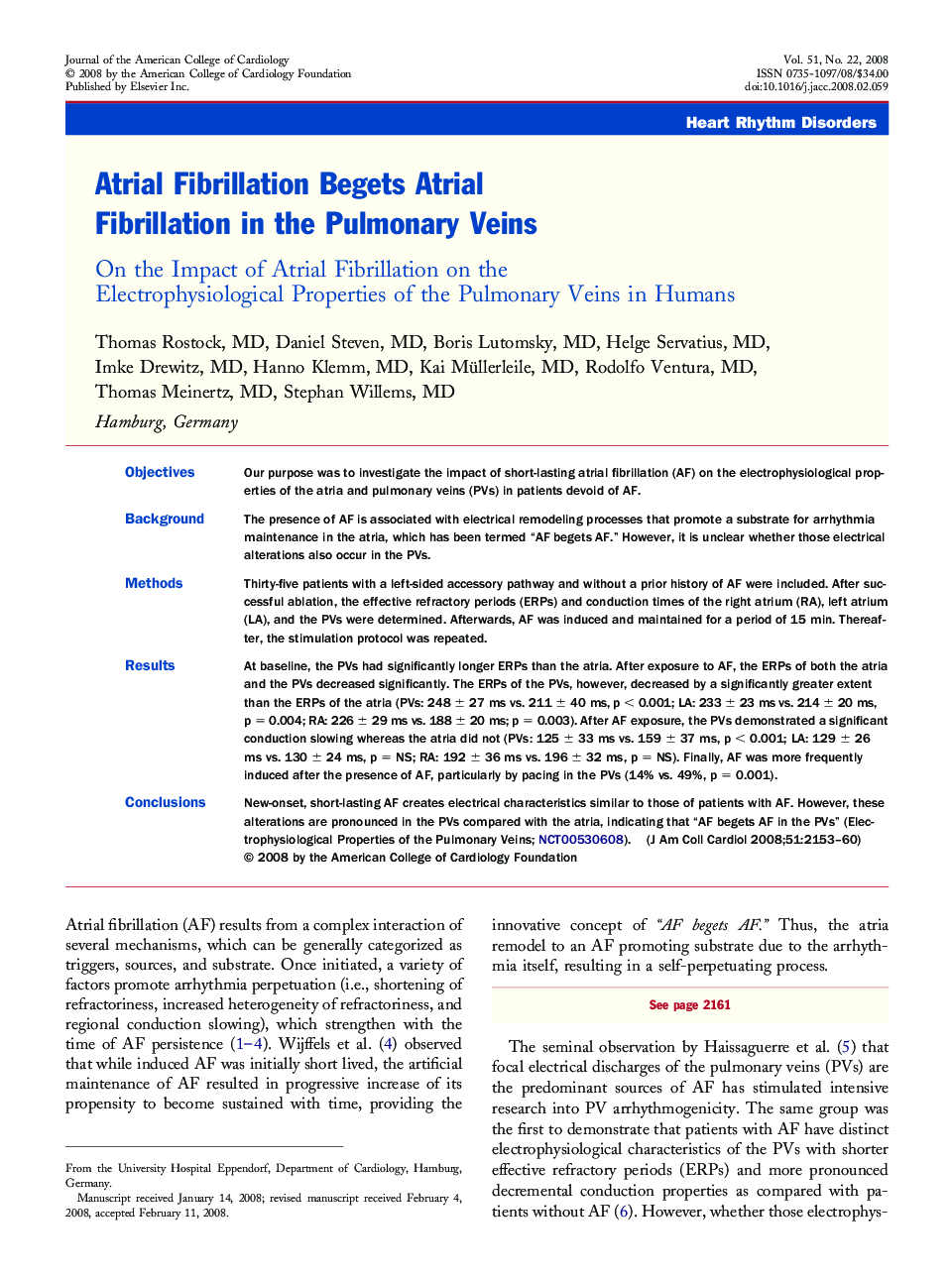| کد مقاله | کد نشریه | سال انتشار | مقاله انگلیسی | نسخه تمام متن |
|---|---|---|---|---|
| 2953809 | 1577419 | 2008 | 8 صفحه PDF | دانلود رایگان |

ObjectivesOur purpose was to investigate the impact of short-lasting atrial fibrillation (AF) on the electrophysiological properties of the atria and pulmonary veins (PVs) in patients devoid of AF.BackgroundThe presence of AF is associated with electrical remodeling processes that promote a substrate for arrhythmia maintenance in the atria, which has been termed “AF begets AF.” However, it is unclear whether those electrical alterations also occur in the PVs.MethodsThirty-five patients with a left-sided accessory pathway and without a prior history of AF were included. After successful ablation, the effective refractory periods (ERPs) and conduction times of the right atrium (RA), left atrium (LA), and the PVs were determined. Afterwards, AF was induced and maintained for a period of 15 min. Thereafter, the stimulation protocol was repeated.ResultsAt baseline, the PVs had significantly longer ERPs than the atria. After exposure to AF, the ERPs of both the atria and the PVs decreased significantly. The ERPs of the PVs, however, decreased by a significantly greater extent than the ERPs of the atria (PVs: 248 ± 27 ms vs. 211 ± 40 ms, p < 0.001; LA: 233 ± 23 ms vs. 214 ± 20 ms, p = 0.004; RA: 226 ± 29 ms vs. 188 ± 20 ms; p = 0.003). After AF exposure, the PVs demonstrated a significant conduction slowing whereas the atria did not (PVs: 125 ± 33 ms vs. 159 ± 37 ms, p < 0.001; LA: 129 ± 26 ms vs. 130 ± 24 ms, p = NS; RA: 192 ± 36 ms vs. 196 ± 32 ms, p = NS). Finally, AF was more frequently induced after the presence of AF, particularly by pacing in the PVs (14% vs. 49%, p = 0.001).ConclusionsNew-onset, short-lasting AF creates electrical characteristics similar to those of patients with AF. However, these alterations are pronounced in the PVs compared with the atria, indicating that “AF begets AF in the PVs” (Electrophysiological Properties of the Pulmonary Veins; NCT00530608).
Journal: Journal of the American College of Cardiology - Volume 51, Issue 22, 3 June 2008, Pages 2153–2160